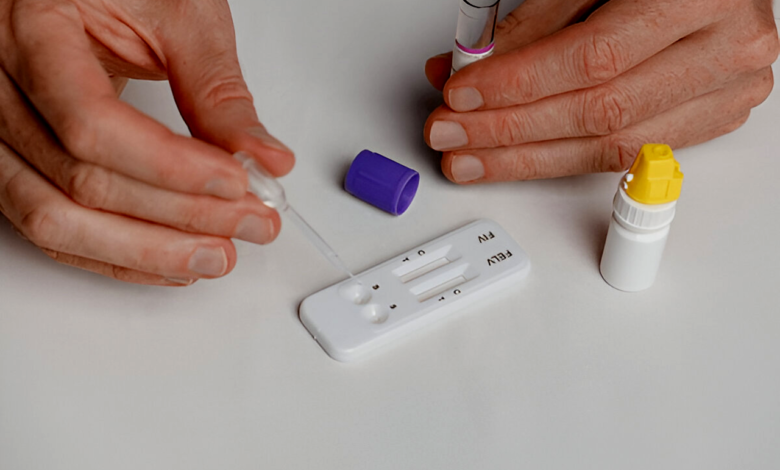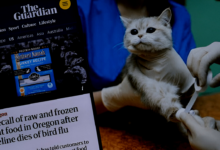
Feline Leukemia in Massachusetts What Cat Owners Need to Watch For
Feline Leukemia Virus (FeLV) in MA Learn symptoms, prevention & care for cats. Essential guide for Massachusetts cat owners to protect their pets.
Feline Leukemia Virus (FeLV) is a serious health threat for cats in Massachusetts, and responsible pet owners should understand its risks, symptoms, and prevention. This highly contagious disease weakens a cat’s immune system, leaving them vulnerable to infections, anemia, and even cancer. While indoor cats are generally safer, those who spend time outdoors or live in multi-cat households face a higher risk of exposure. Early detection through regular vet check-ups and proper care can make a significant difference in managing the disease. This guide will help Massachusetts cat owners recognize the warning signs, explore treatment options, and take steps to protect their feline companions.
As one of the most common infectious diseases in cats, Feline Leukemia Virus requires vigilance, especially in areas with high feline populations. Massachusetts pet owners should be aware that FeLV spreads through saliva, shared food bowls, and close contact, making prevention crucial. While there is no cure, supportive treatments and a strong preventive approach including vaccination and keeping cats indoors can greatly improve outcomes. By staying informed and working closely with veterinarians, cat owners can reduce the risks and ensure their pets lead healthier, happier lives.
Feline Leukemia in Massachusetts
FeLV Weakens the Immune System Like HIV in Humans
Feline Leukemia Virus is a retrovirus that attacks a cat’s immune system, making it difficult for them to fight off infections. Similar to HIV in humans, FeLV does not directly cause death but leads to severe secondary illnesses, including Chronic infections (respiratory, skin, or urinary tract). Anemia (due to bone marrow suppression). Lymphoma and other cancers Cats with FeLV are also more susceptible to common bacteria and viruses that healthy cats would normally resist.
Transmission Occurs Through Close Contact
FeLV spreads easily among cats through bodily fluids. The most common routes include Saliva (shared food/water bowls, mutual grooming, bites). Nasal secretions (sneezing, close contact). Urine and feces (shared litter boxes). Mother-to-kitten transmission (during birth or nursing) Outdoor cats, strays, and cats in multi-cat households (shelters, catteries) are at the highest risk.
Not All Exposed Cats Develop Permanent Infection
After exposure, a cat’s immune response determines the outcome Some cats clear the virus (strong immune response) Others become latent carriers (virus remains dormant but may reactivate later). Persistently infected cats (develop lifelong illness) Kittens, senior cats, and immunocompromised felines are most likely to suffer severe, life-threatening complications. Regular testing and early detection are crucial for managing the disease.
Symptoms of Feline Leukemia in Cats
Early-Stage Symptoms
In the initial phase, FeLV symptoms may resemble common illnesses, including Lethargy (unusual tiredness or lack of energy). Gradual weight loss (despite normal eating habits). Decreased appetite (partial or complete loss of interest in food). Mild fever (may come and go) These subtle signs often go unnoticed, making regular vet check-ups critical for early detection.
Late-Stage Complications
In advanced cases, FeLV can lead to Severe anemia (extreme weakness, rapid breathing). Neurological problems (seizures, paralysis, or behavior changes). Cancer development (especially lymphoma or leukemia). Secondary fatal infections (from complete immune system failure). Since these symptoms mimic other diseases, diagnostic blood tests (ELISA, IFA) are the only way to confirm FeLV.
Progressive Symptoms
As FeLV advances, more severe symptoms emerge due to immune suppression Pale gums (sign of anemia from reduced red blood cells). Swollen lymph nodes (especially around neck and legs). Feline Leukemia (respiratory, skin, or mouth infections that keep returning). Poor coat condition (dull, matted fur due to nutritional deficiencies). Digestive issues (persistent diarrhea or vomiting).
Diagnosis and Treatment Options
Veterinarians diagnose FeLV through blood tests that detect viral proteins or genetic material. The most common tests are ELISA (used for initial screening) and IFA (confirmatory test). If a cat tests positive, additional tests may be needed to assess their overall health and detect secondary infections. Owners should keep FeLV-positive cats indoors to prevent spreading the virus and reduce exposure to other illnesses. Regular vet visits are crucial for monitoring their condition.
Unfortunately, there is no cure for FeLV, but supportive care can help manage symptoms and prolong a cat’s life. Treatment options include Antiviral Feline Leukemia to reduce viral load. Immune-boosting supplements to help fight infections. Antibiotics for secondary bacterial infections. Blood transfusions in cases of severe anemia. Proper nutrition to maintain strength.
Preventing FeLV in Massachusetts Cats
Prevention is the best defense against FeLV. Key steps include Vaccination While not 100% effective, the FeLV vaccine is recommended for at-risk cats (outdoor cats, multi-cat households). Massachusetts veterinarians can advise on the best vaccination schedule. Keeping Cats Indoors Limiting outdoor access reduces exposure to infected cats. Separating Infected Cats If one cat tests positive, they should be kept away from uninfected cats to prevent transmission. Regular Testing New cats entering a household should be tested before introduction. Spaying/Neutering Reduces roaming and aggressive Feline Leukemia that increase infection risk.
FeLV and Multi-Cat Households
Managing FeLV in homes with multiple cats requires extra caution. If one cat is infected, others should be tested immediately. While some owners choose to isolate the FeLV-positive cat, others may keep them together if all cats are already exposed. However, this increases the risk of ongoing infection.
Sanitation is critical disinfecting food bowls, litter boxes, and bedding helps reduce viral spread. Stress weakens the immune system, so providing a calm, enriching Feline Leukemia is beneficial.
FeLV Resources in Massachusetts
Massachusetts has several veterinary clinics, animal hospitals, and shelters that offer FeLV testing, vaccinations, and support. Organizations like the MSPCA and local rescue groups provide resources for owners of FeLV-positive cats. Financial assistance programs may also help cover treatment costs.
Read More: The Best Diet for Your Pet’s Breed: A Comprehensive Guide
Conclusion
Feline Leukemia Virus (FeLV) remains a significant health concern for cats across Massachusetts, but with proper awareness and preventive measures, its impact can be greatly reduced. By recognizing the early signs of infection, maintaining regular veterinary Feline Leukemia, and keeping at-risk cats indoors, owners can protect their feline companions from this serious disease. Vaccination plays a crucial role in prevention, particularly for outdoor cats or those in multi-cat households. While an FeLV diagnosis can be daunting, many cats with proper care can still enjoy a good quality of life for years to come.
For Massachusetts cat owners, staying informed about Feline Leukemia Virus is the first step toward safeguarding their pets’ health. Through responsible ownership including testing new cats before introduction, separating infected felines, and providing supportive care the spread of FeLV can be effectively managed. Remember that your veterinarian is your best resource for prevention strategies and treatment options. With vigilance and compassion, Feline Leukemia work together to reduce the threat of this disease and ensure our cats live longer, healthier lives.
FAQs
Can indoor cats get FeLV?
Yes, if they encounter an infected cat (e.g., through an open window or a new pet introduction).
Is FeLV contagious to humans or other pets?
No, FeLV only affects cats and Feline Leukemia to humans, dogs, or other animals.
How long can a cat live with FeLV?
Some cats live for years with proper care, while others may succumb to secondary illnesses sooner.
Should I euthanize my FeLV-positive cat?
Not necessarily many FeLV cats live happy lives with medical management and a stress-free environment.
How often should my cat be tested for FeLV?
Annual testing is recommended for at-risk cats, especially Feline Leukemia go outdoors or live with other cats.







